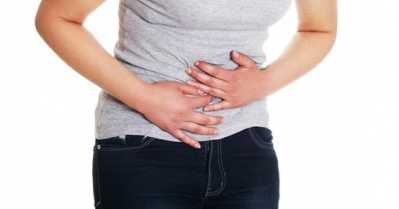Liver is the largest gland of the human body that performs several functions such as regulating body systems, detoxifying waste metabolites, regulating metabolism and synthesizing different compounds. The reddish brown colored liver is somewhat triangular in shape, weighing approximately one and a half kilograms. A protective capsule is present around the liver which has many pain receptors on it. Inflammation and swelling of liver can exert direct pressure on this protective capsule that can result in liver pain.
What Does Liver Pain Feel Like?
Sometimes it is difficult to identify liver pain as it usually presents with a dull ache in the stomach and surrounding tissues. Just so you know, the symptoms of liver pain vary from individual to individual. Characteristic symptoms of liver pain may be described as:
- Stabbing pain which generally appears in the upper abdomen
- Generalized pain in the abdomen that may radiate to the back
- Dull but constant pain in the upper abdominal quadrant
- Pain worst during coughing
There are some other often overlooked common symptoms that may accompany your liver pain:
- Appearance of rash and spots on the skin

- Itching on skin surface
- Dark circles appear around the eyes
- Eyes appears yellow in color
- Perfused sweating
- Sharp body odor
- Bad breath
- Discolored stools and concentrated urine with a dark color
- Pain in joints and generalized body ache
- Inflammation and redness over skin of palm and sole
- Skin appear yellow in color, such as in jaundice
What Causes Liver Pain?
Since that we have known "What does liver pain feel like?" it is very important to know what causes liver pain. Following are most common causes:
1. Acetaminophen
Acetaminophen is a pharmacological agent that is widely used for the management of minor health issues such as pain allergy and sinus inflammation. Excessive intake leads to its accumulation in the liver, causing hepatic toxicity and liver pain.
This kind of liver pain may also be accompanied by itchy skin, dark urine, yellowing of skin and whitening of eyes, flu like symptoms, abdominal pain on the upper right side, etc.
2. Alcohol Liver Disease
Excessive use of alcohol can lead to chronic hepatic disorders like liver fibrosis. Classic symptoms include psychological impairment such as agitation, hallucinations and confusion, abdominal tenderness and ache, tiredness, excessive thirst, loss of appetite and sleep, weight gain, pale skin, etc.
What to do: Quitting the use of alcohol is suggested as the first and foremost measure. Joining self-help groups, taking abstinence medication and eating foods rich in calories, carbs and proteins are great measures. However, if liver dysfunction is profound, the only therapeutic option is to go for liver transplantation.
3. Primary Liver Cancer
When liver cells multiply extra-mitotically and abnormally, liver cancer happens, which usually can't be detected in the early stages. Characteristic symptoms of liver cancer include liver pain due to liver enlargement, weight and appetite loss, white eyes, nausea and vomiting, weakness and tiredness, etc.
Treatments mainly include chemotherapy and radiation therapy, radiofrequency ablation, liver transplantation, etc.
4. Liver Cirrhosis
Another reason that makes you ask "What does liver pain feel like" is liver cirrhosis. This condition develops and deteriorates gradually, which replaces healthy liver tissues with scaring ones. Gradually, they block liver blood flow, makes liver unable to process toxins and even lead to death. Some symptoms of liver cirrhosis include exhaustion, abdominal pain, itching in hands and feet, insulin resistance and type 2 diabetes, easy bruising, etc.
The only cure available for liver cirrhosis to accept liver transplantation, but limited smoking and drinking can help soothe your suffering.
5. Liver Cysts
Cysts are thin-walled, fluid-filled cavities, which usually don't cause any discomfort and no treatment is needed. But if it enlarges, it can rupture or put pressure on other organs, leading to liver pain that can radiate to the upper abdominal quadrant.
What to do: Unpainful cysts may go away on its own. Sometimes fluid drainage can be performed for temporary relief. In some cases, surgical removal of cyst is advised.
6. Fatty Liver Disease
It's normal to have some fat in your liver, but if fat takes up more that 10% your liver weight, it means you have a fat liver. Characteristic symptoms of fatty liver are liver pain, loss of weight and appetite, nausea, fatigue, jaundice like symptoms, etc.
What to do: Having balanced meals, Doing more exercises and staying away from certain medications may alleviate your suffering. In extreme cases, liver transplantation is needed.
7. Hepatitis
Hepatitis refers to liver inflammation that deteriorates the functions of liver cells. There are different types of hepatitis and severity of disease varies according to the primary disease process.
Then what does liver pain feel like in the setting of hepatitis? Actually it just feels like abdominal pain, which may be accompanied by enlarged liver, malaise, diarrhea, fever, vomiting, dark urine, etc.
Your treatment options rely on the severity of your condition. Drugs like antiviral agents can be really helpful. Getting enough nutrition is also a great supportive treatment.
8. Primary Sclerosing Cholangitis
Primary sclerosing cholangitis or PSC means inflammation of liver and bile duct, resulting in liver scarring and appearance of fibrous tissues. It develops really slowly and some symptoms even take years to show. Except liver pain, it can cause severe itching, jaundice, fatigue, malabsorption, etc.
What to do: Medication can be used to soothe symptoms like itchiness, inflammation, malnutrition, bile duct blockage, etc. A liver transplantation is only cure for this condition.
